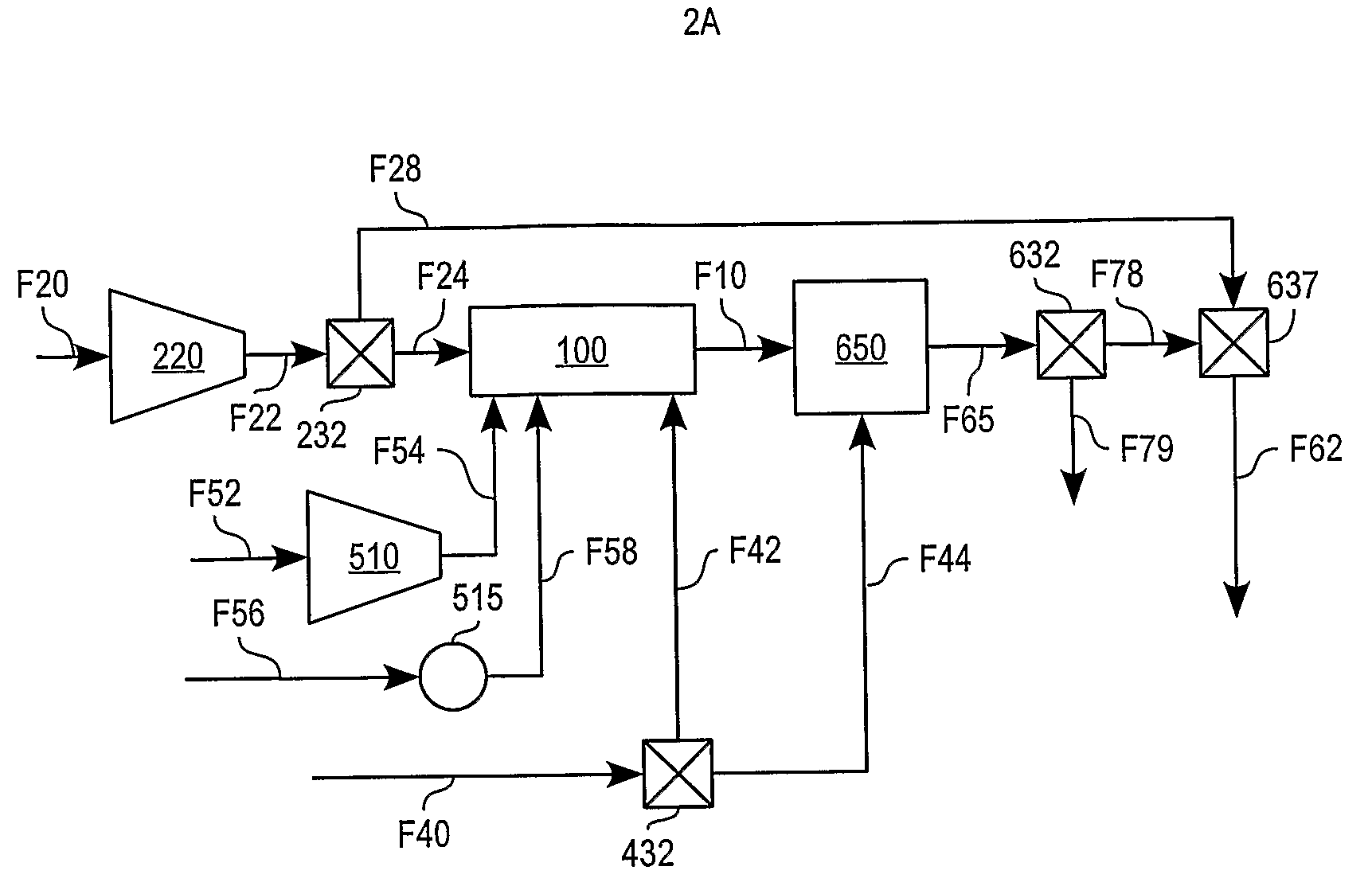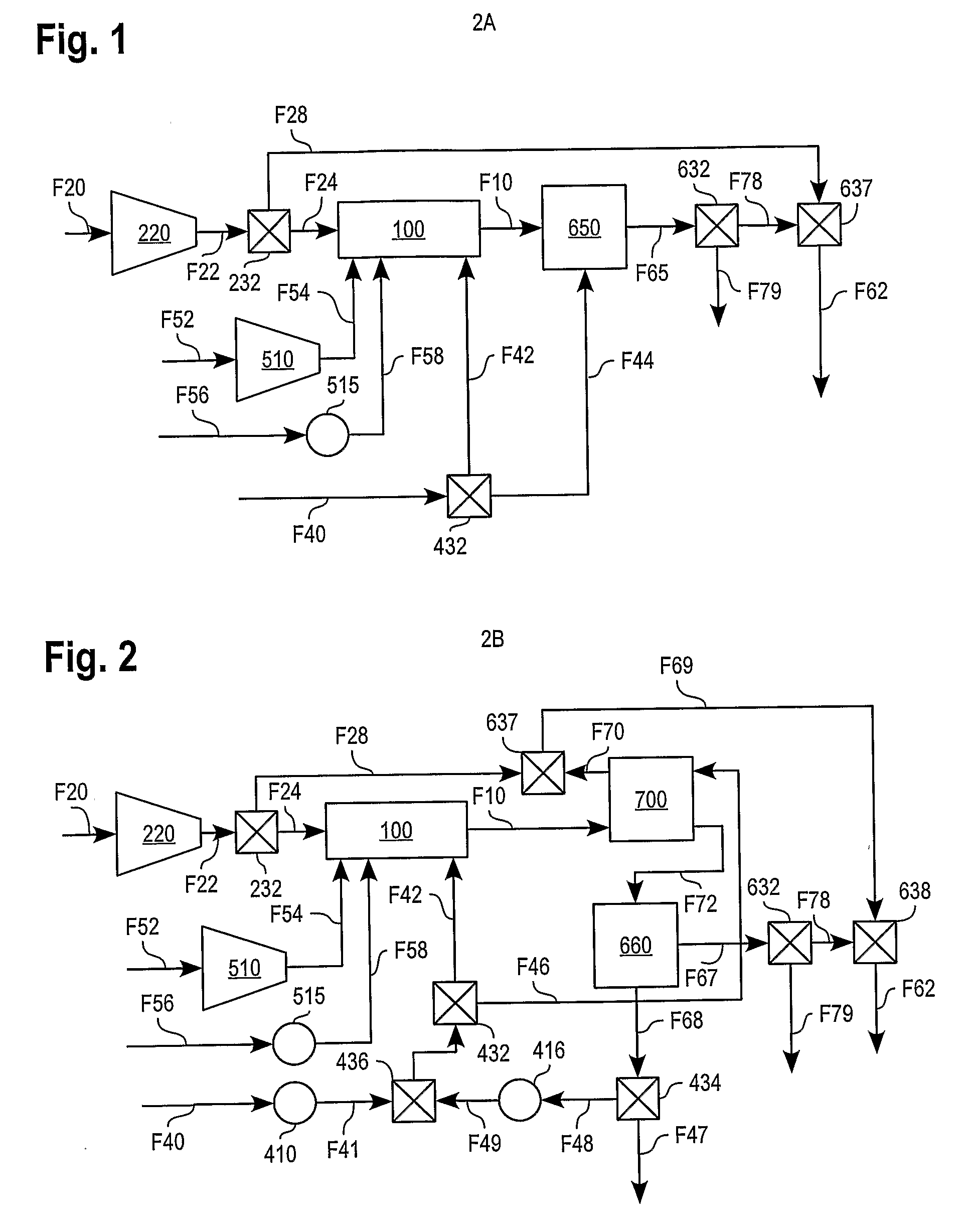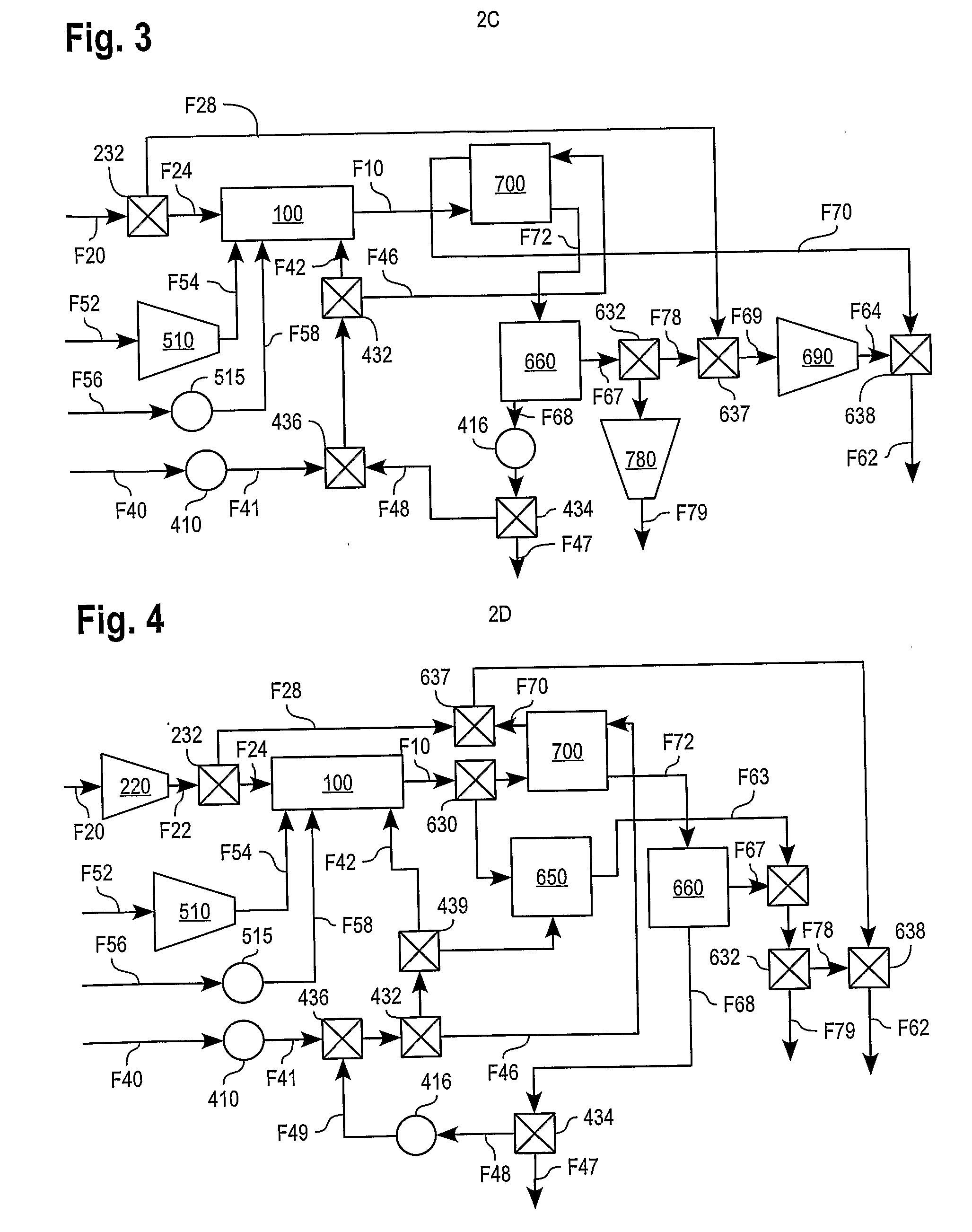Thermogenerator to remediate contaminated sites
a technology of contaminated sites and thermal energy, applied in the direction of separation processes, insulation, borehole/well accessories, etc., can solve the problems of reliability problems, high cost of forming steam using electricity, and loss of heat of combustion resulting from incineration process, so as to reduce equipment required, reduce the cost of energy, and reduce the makeup fuel or energy required
- Summary
- Abstract
- Description
- Claims
- Application Information
AI Technical Summary
Benefits of technology
Problems solved by technology
Method used
Image
Examples
Embodiment Construction
General:
[0038]In the description which follows, the pollutants are assumed to include a substantial quantity of combustible hydrocarbons, and the primary energy generation process will be a combustion process. As such, the presently known best mode of practicing the invention utilizes the VAST combustion system described in the above-identified patents, the invention will be described in that context. It should be understood, however, that other reaction systems and processes capable of generating the needed remediation fluid, and of converting the extracted contaminant into a safely disposable form can alternatively be employed.
[0039]Turning now to FIG. 1, a remediation system according to the invention, generally denoted at 2A, provides remediation fluid F62 for delivery into the ground within or near the contaminated site. Remediation fluid F62 comprises products of combustion and preferably includes steam. It optionally includes a steam-air combination, and optionally liquid wat...
PUM
 Login to View More
Login to View More Abstract
Description
Claims
Application Information
 Login to View More
Login to View More - R&D
- Intellectual Property
- Life Sciences
- Materials
- Tech Scout
- Unparalleled Data Quality
- Higher Quality Content
- 60% Fewer Hallucinations
Browse by: Latest US Patents, China's latest patents, Technical Efficacy Thesaurus, Application Domain, Technology Topic, Popular Technical Reports.
© 2025 PatSnap. All rights reserved.Legal|Privacy policy|Modern Slavery Act Transparency Statement|Sitemap|About US| Contact US: help@patsnap.com



